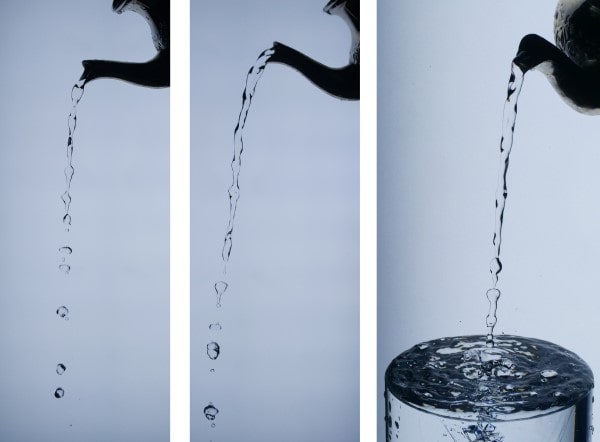
Whirligig beetles can reach speeds of up to one metre per second – or 100 body lengths per second – as they skirt across the water. Scientists thought the animals did this using their oar-like hind legs to generate “drag-based” thrust, a bit like how a rodent swims.
To do so, however, the beetle would need to move its legs faster than its swimming speed, which in turn would require pushing against the water at unrealistic speeds.
To solve this bugging problem, researchers at Cornell University have used high-speed cameras to film the whirligigs as they swam. They found that the beetles instead use lift-based thrust, which has been documented in whales, dolphins and sea lions.
The trusting motion is perpendicular to the water surface and the researchers calculate that the forces generated by the beetle in this way can produce the speeds seen in the water. According to Cornell’s Yukun, that makes whirligig beetles “by far the smallest organism to use lift-based thrust for swimming”.
Quali-tea result
Visit Morocco and you might see tea being poured from a great height without a single drop being spilled. The aim is to produce a layer of foam on top of the drink, which not only adds to the aesthetic appeal but also to the tasting experience, enhancing the tea’s aromas.
Surprisingly, however, no-one has ever – until now — studied the physics of happens as a liquid is poured into a cup or mug.
Ho-Young Kim from Seoul National University and colleagues sent a jet of water through a nozzle onto a water-filled cylinder and then used an underwater microphone to record the sounds that were produced. They also imaged the patterns of bubbles formed in the water with a high-speed camera.
Turns out that when the jet breaks into droplets – as happens when poured from a great height – it produces a louder sound as more air bubbles are trapped in the liquid. To guarantee no sound, the researchers say, you must pour from a height that may only be a few centimetres from the surface.
And finally, scientists in India have carried out computer simulations of the flight of nylon shuttlecocks, which due to their superior durability have become more widely used compared to those traditionally made from duck feathers.
They found that the flight of modern nylon shuttlecocks can be much different to the feathered variety. When hit at high speed the nylon shuttlecocks deform more, lowering their air resistance and increasing the speed they move through the air. So, a player on the receiving end of a smash shot would find a nylon shuttlecock harder to return.
- SEO Powered Content & PR Distribution. Get Amplified Today.
- PlatoData.Network Vertical Generative Ai. Empower Yourself. Access Here.
- PlatoAiStream. Web3 Intelligence. Knowledge Amplified. Access Here.
- PlatoESG. Carbon, CleanTech, Energy, Environment, Solar, Waste Management. Access Here.
- PlatoHealth. Biotech and Clinical Trials Intelligence. Access Here.
- Source: https://physicsworld.com/a/whizzing-whirligig-beetles-the-sound-of-pouring-water-shuttlecock-mechanics/



